Key takeaways
- Seesaw enhances student engagement by allowing them to showcase their work, fostering pride and ownership in their learning processes.
- Integrating Seesaw into teaching promotes critical thinking and activism, enabling students to discuss real-world issues and involve their families in the learning journey.
- Effective use of Seesaw requires a balance of creative freedom and clear guidelines to ensure all students can navigate the platform successfully.
- Encouraging personalization in posts and facilitating peer feedback can significantly boost student motivation and community within the digital space.
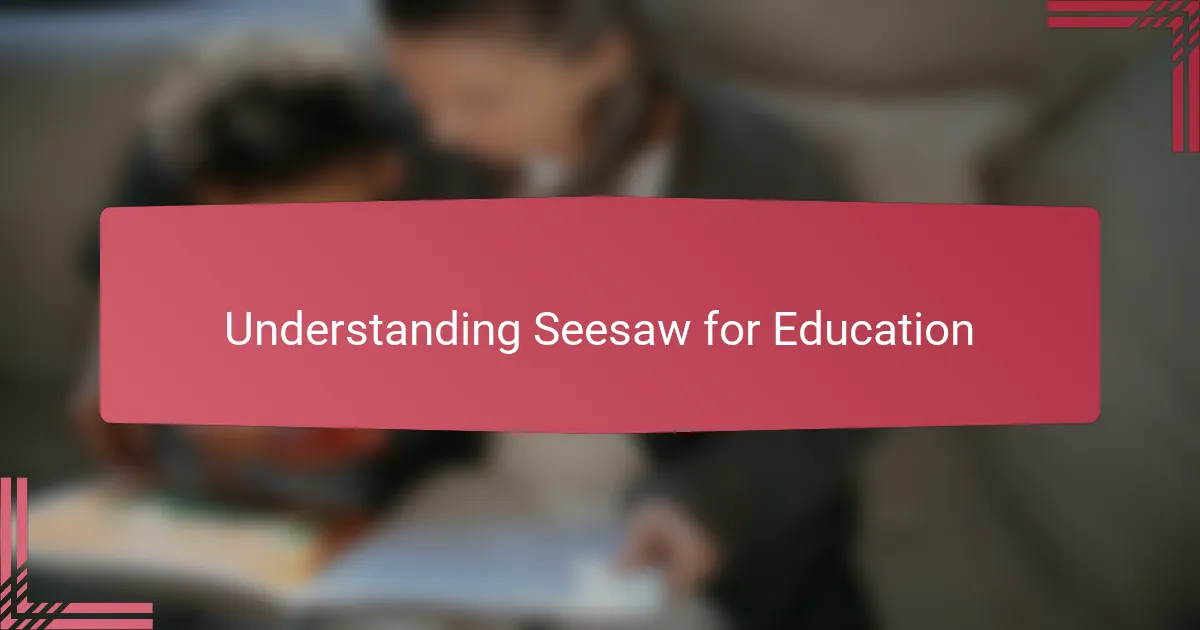
Understanding Seesaw for Education
Seesaw for Education is much more than just a digital portfolio; it’s a vibrant space where student voices come alive. I remember the first time I saw a student eagerly sharing their art and writing—it felt like a window into their world, full of pride and creativity. Have you ever wondered how technology can transform shy or reluctant students into confident storytellers?
What strikes me about Seesaw is its simplicity combined with powerful features. Students can upload photos, videos, drawings, or notes, and teachers can easily provide feedback all in one place. From my experience, this seamless interaction creates a meaningful dialogue between students, teachers, and even families.
Understanding Seesaw also means appreciating its role in making learning visible and accessible. It’s not just about showcasing final products but about celebrating the process, growth, and effort. When I reflect on the mindful moments it fosters, I realize why it’s become an essential tool in my classroom.
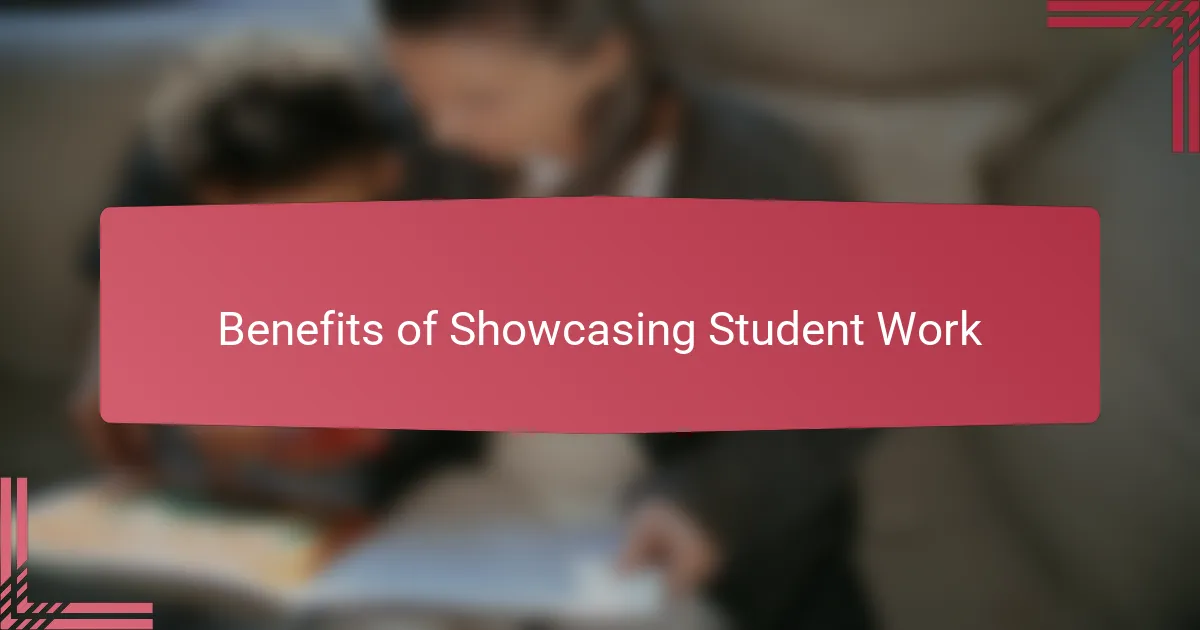
Benefits of Showcasing Student Work
There’s something truly powerful about putting student work on display. When students see their efforts valued and shared, it builds a sense of pride and ownership that I’ve found motivates them to push a little further. Have you noticed how even the quietest students suddenly want to contribute when their voices are heard?
Showcasing work also brings families into the learning circle in a way that feels real and immediate. I remember a parent telling me how seeing their child’s digital portfolio on Seesaw gave them a newfound appreciation for the daily challenges and triumphs of school life. That connection makes learning more meaningful beyond the classroom walls.
Most importantly, sharing student work highlights growth, not just grades. By celebrating progress and persistence, I see students embracing mistakes as stepping stones rather than setbacks. Doesn’t that shift in mindset feel like one of the most rewarding changes a teacher can witness?
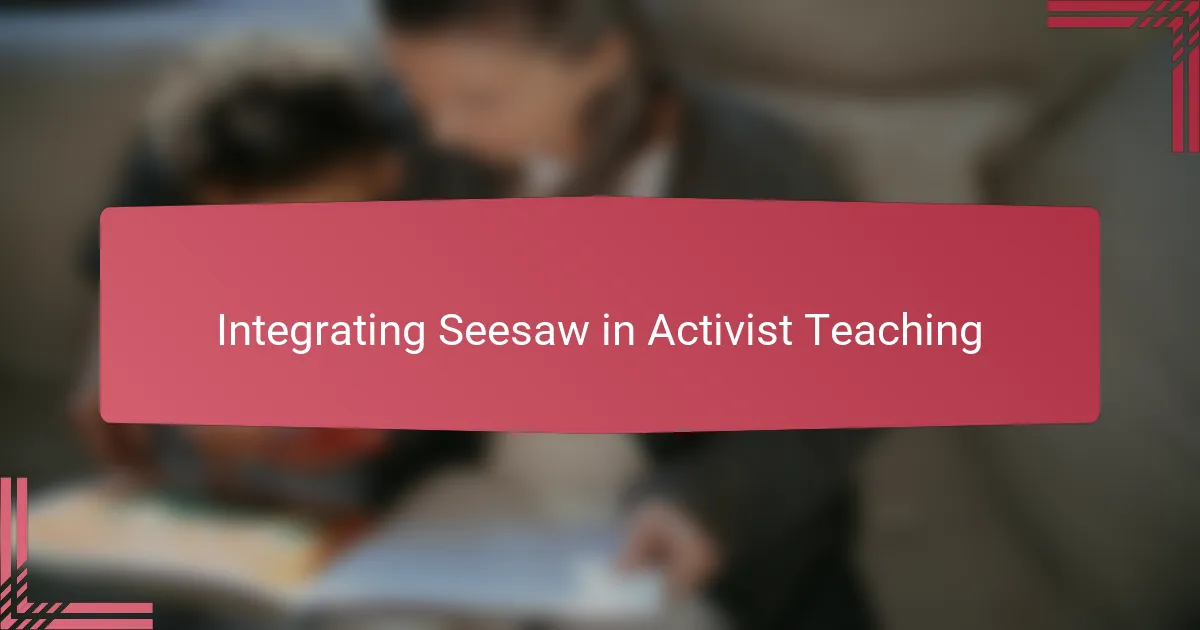
Integrating Seesaw in Activist Teaching
Integrating Seesaw into activist teaching felt like a natural extension of my commitment to amplify student voices that often go unheard. I’ve found that when students use Seesaw to share their reflections on social justice topics, their passion and perspective come through so vividly—it’s like the platform breathes life into their activism. Have you ever seen a student’s eyes light up as they realize their ideas matter beyond the classroom? That moment is priceless.
What fascinates me is how Seesaw encourages critical thinking by inviting students to document not only their learning but also their questions and concerns about the issues we study. Through sharing artifacts like videos or journal entries, students engage with real-world problems in a deeply personal way. From my experience, this process makes activism tangible, turning abstract concepts into meaningful conversations.
I also appreciate how Seesaw bridges gaps between school and community by including families in the dialogue. When parents see their children’s activist projects unfold digitally, they often respond with surprise and support, sparking discussions at home that extend classroom learning. Have you noticed how that ripple effect increases student confidence and commitment? It’s a game changer in building lifelong advocates.

Step by Step Seesaw Setup
Getting started with Seesaw is surprisingly straightforward, and that simplicity made it easy for me to dive right in without feeling overwhelmed. First, I created my teacher account and then set up my class by entering student names or importing them directly. Have you ever felt that moment of relief when a tech tool just works as expected? That’s exactly how I felt at this stage.
Next, I guided my students through joining the class using their unique codes—this was where I noticed their excitement begin to build. Watching them log in one by one, eager to upload their first work samples, reminded me how empowering even simple steps can be. I made sure to walk around and help those who hesitated, because a little encouragement goes a long way in boosting confidence.
Finally, I customized settings to allow families easy access, which I know makes a huge difference in fostering home-school connections. From my experience, enabling family engagement right from the start can transform a digital portfolio into a shared celebration. Have you tried involving families early on and noticed how that changes the dynamic?
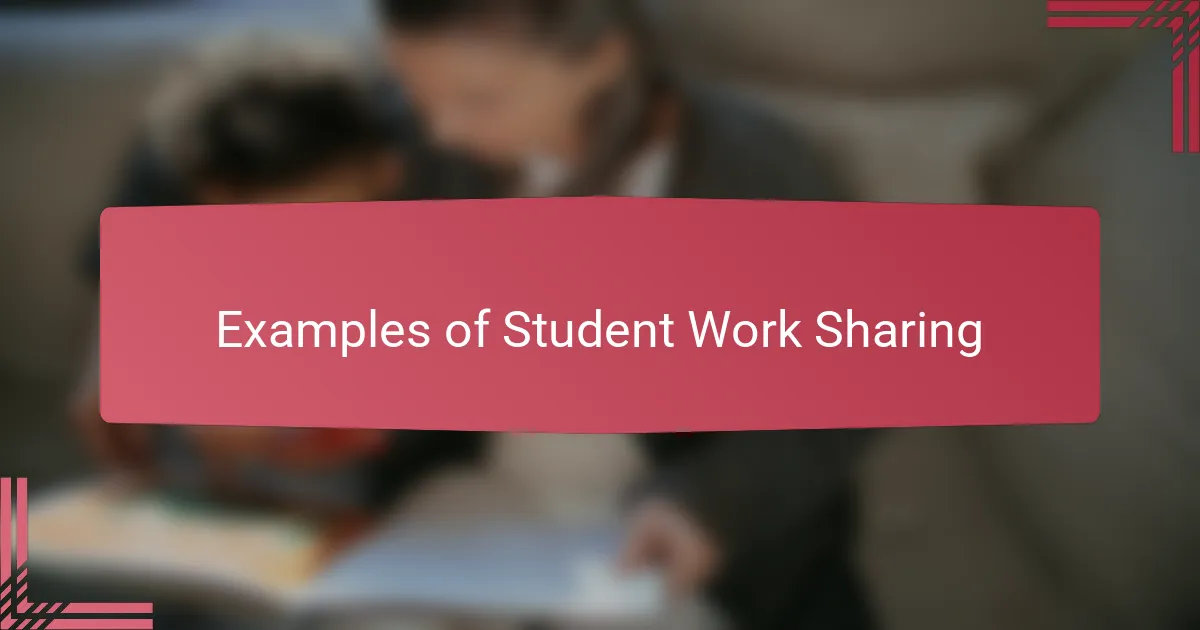
Examples of Student Work Sharing
One vivid example I recall is a poetry unit where students recorded themselves reading original poems. Hearing their voices added a layer of authenticity I hadn’t expected, and it was clear how proud they were to share with classmates and families. Isn’t there something special about hearing a child express their work aloud, capturing emotion beyond the written word?
Another memorable instance involved a social justice project where students uploaded photos and reflections on local community issues. Watching them connect their learning to real-world experiences through Seesaw felt deeply rewarding. Have you ever witnessed a student’s perspective evolve simply by sharing their story digitally?
Finally, I found that even simple drawings or quick voice notes sparked meaningful feedback from peers. Students weren’t just showcasing finished products—they were inviting dialogue and reflection that enriched the entire learning community. Doesn’t that kind of active engagement redefine what sharing student work can look like?
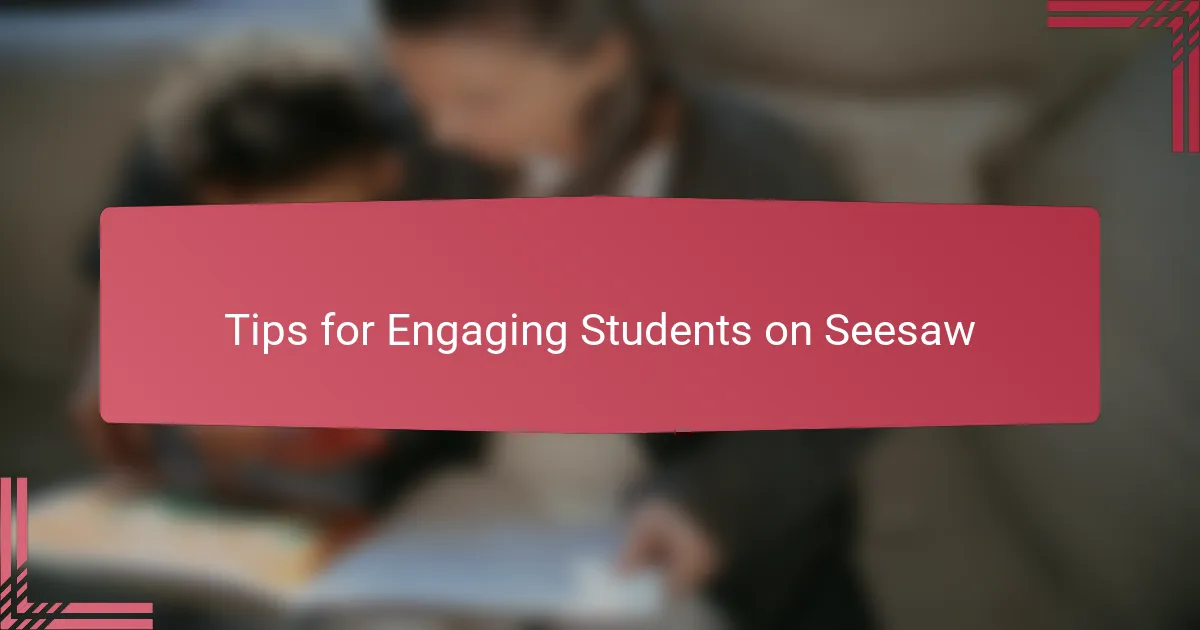
Tips for Engaging Students on Seesaw
One tip I’ve found invaluable is encouraging students to personalize their posts on Seesaw. When I ask them to add voice recordings or drawings alongside their work, it seems to deepen their connection to the assignment. Isn’t it amazing how a student’s tone or a little sketch can bring their thinking to life in ways words alone never could?
Another strategy that’s worked well for me is setting up routine check-ins where students respond to each other’s posts. This peer interaction not only boosts engagement but also builds a sense of community within the digital space. Have you noticed how students become more motivated when they know their classmates are paying attention and offering thoughtful feedback?
Lastly, I always strive to keep tasks clear and achievable, especially for younger or less tech-savvy students. Breaking down the steps and celebrating small successes helps maintain their confidence and enthusiasm. After all, when students feel capable navigating the platform, their creativity truly flourishes. Don’t you think that feeling of mastery is key to sustained engagement?

Reflecting on Impact and Improvements
Looking back, I’ve noticed how Seesaw shifted the classroom dynamic in unexpected ways. Students seemed more eager to share their voices because they knew their work wasn’t just disappearing into a drawer—it was seen, celebrated, and responded to by people who mattered. Have you ever experienced that moment when a student lights up because their effort truly counts? For me, those instances reinforced the impact of making learning visible.
Yet, reflection also unveils areas ripe for improvement. I found that while many students thrived with creative freedom, some needed clearer guidelines and more scaffolding to use Seesaw effectively. It made me realize that technology isn’t a magic bullet; it requires thoughtful planning and ongoing support to unlock its full potential. How often do we overlook the importance of balancing autonomy with structure?
Looking ahead, I’m excited to explore ways to enhance family engagement even further. Although many parents appreciated the window into their child’s learning journey, I wonder if more interactive features could deepen those connections. What if we designed prompts or challenges that invited families to participate actively? In my experience, those small shifts can transform passive viewing into shared advocacy and growth.